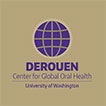
Children and adolescents living with HIV (CALHIV) have a higher risk of oral tissue diseases than those without HIV. Increasing awareness regarding the need to integrate oral health within medical care among pediatric HIV populations is crucial. Our study published in JDR Clinical & Translational Research entitled “Oral diseases and oral health-related quality of life among Kenyan children and adolescents with HIV” examines the associations between oral diseases and oral health-related quality of life (OHRQoL) in Kenyan CALHIV.
This cross-sectional study conducted in Nairobi, Kenya, administered oral examinations and oral health surveys (via the parent or guardian of the child/adolescent) to 71 children and adolescents ranging in age from 10 to <21 years. The survey measured oral symptoms, functional limitations, and emotional and social well-being. The overall mean OHRQoL score was 12.6. Results indicated that children/adolescents with ulcers had the worst overall OHRQoL scores (mean of 21.8). Children/adolescents with other oral diseases such as dry mouth and untreated caries had overall higher OHRQoL scores than those without disease.
Access to oral health care for CALHIV could be significantly improved by integrating it within the ongoing comprehensive medical care received in HIV treatment programs throughout Kenya.
Because dental care is included in the National Health Insurance, integration of oral care into HIV care could be efficient, cost-effective, and highly acceptable. Incorporating oral health protocols into children’s HIV care programs has the potential to increase surveillance of HIV disease trajectory, monitor the effectiveness of HIV anti-retroviral therapy, and improve the quality of life for children and adolescents living with HIV.
